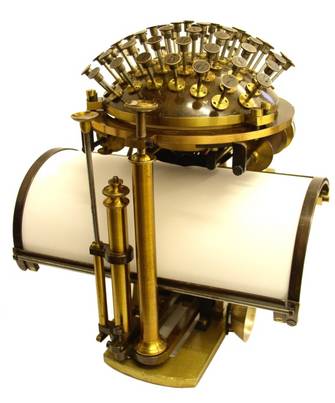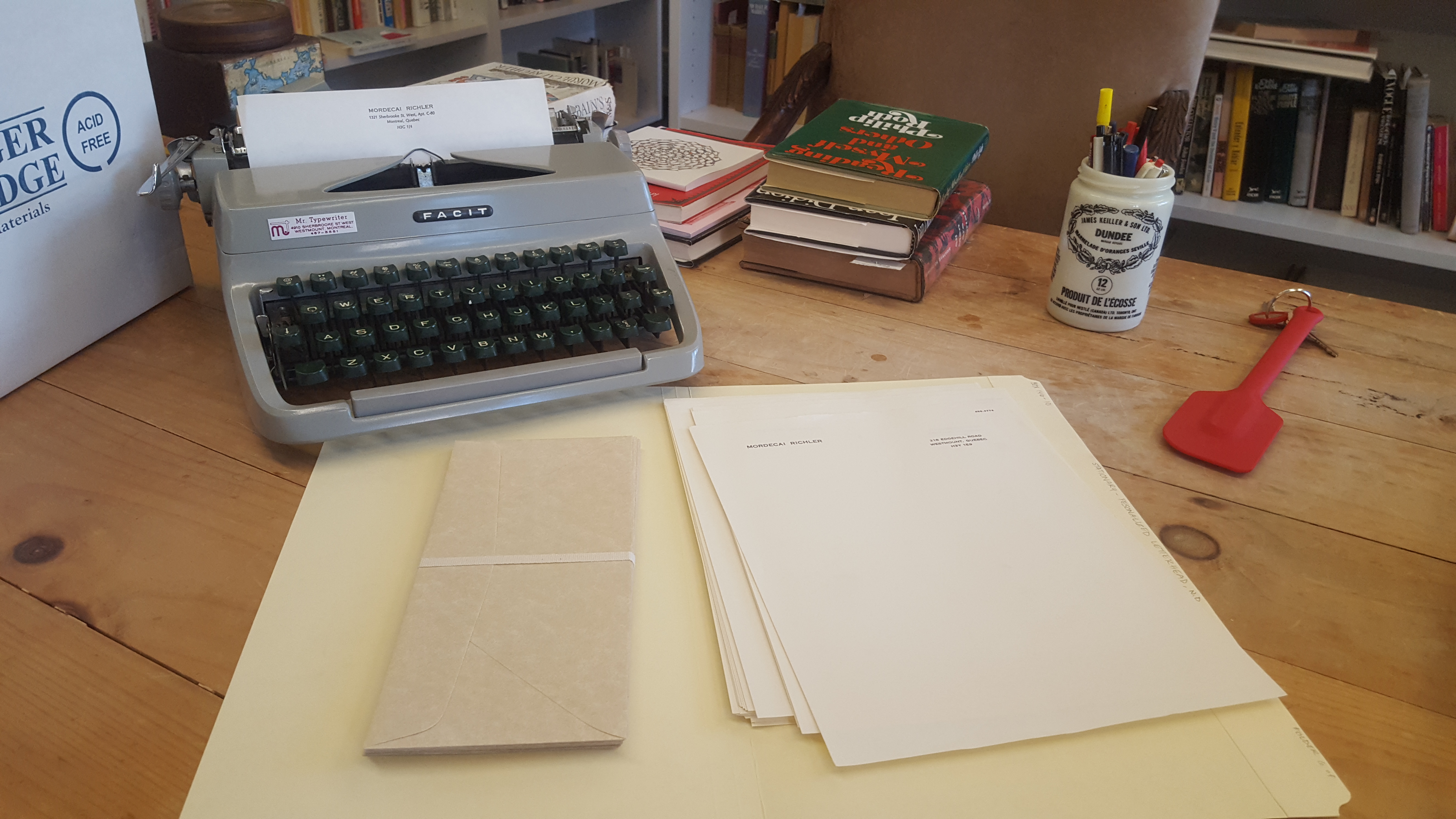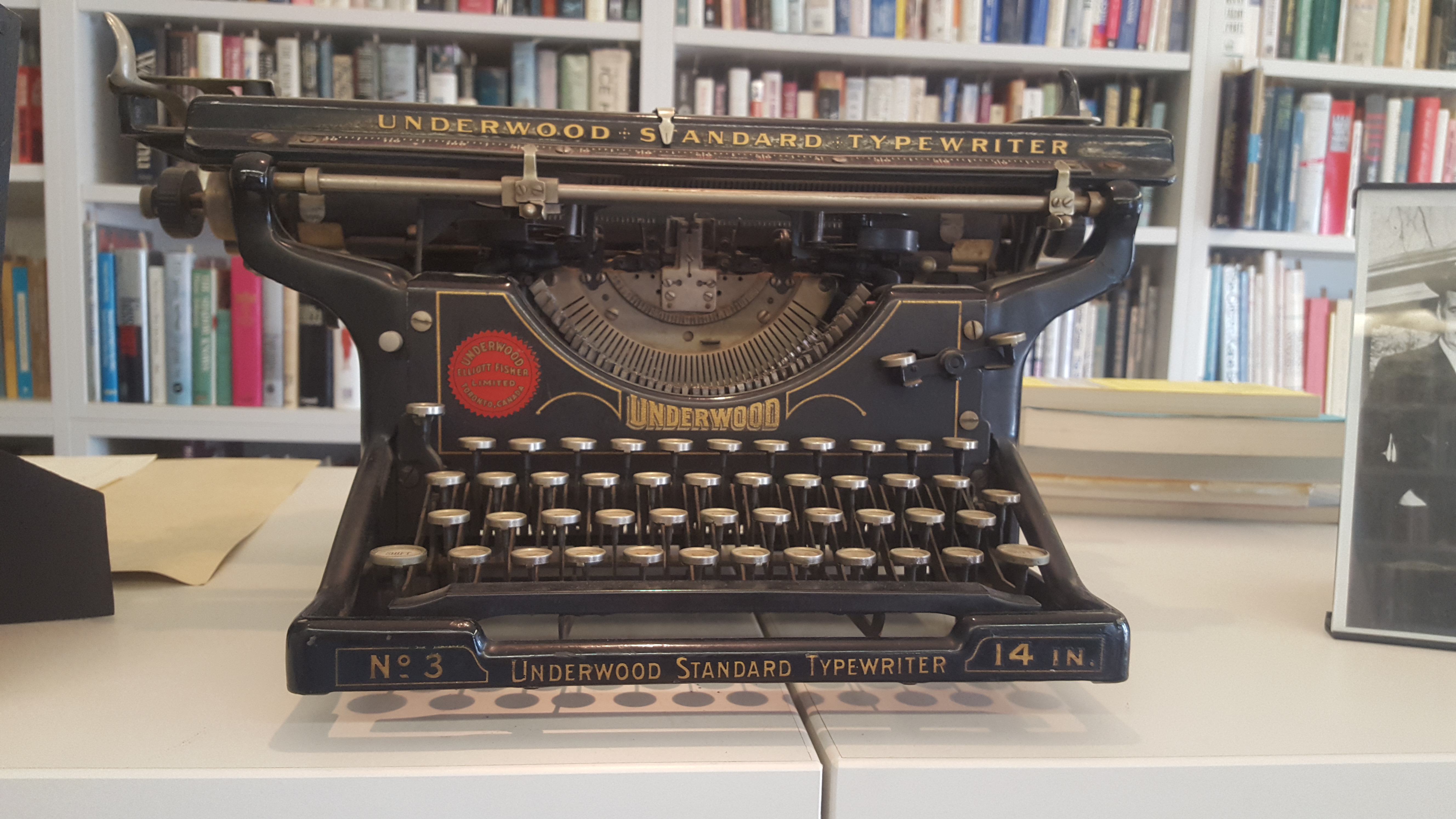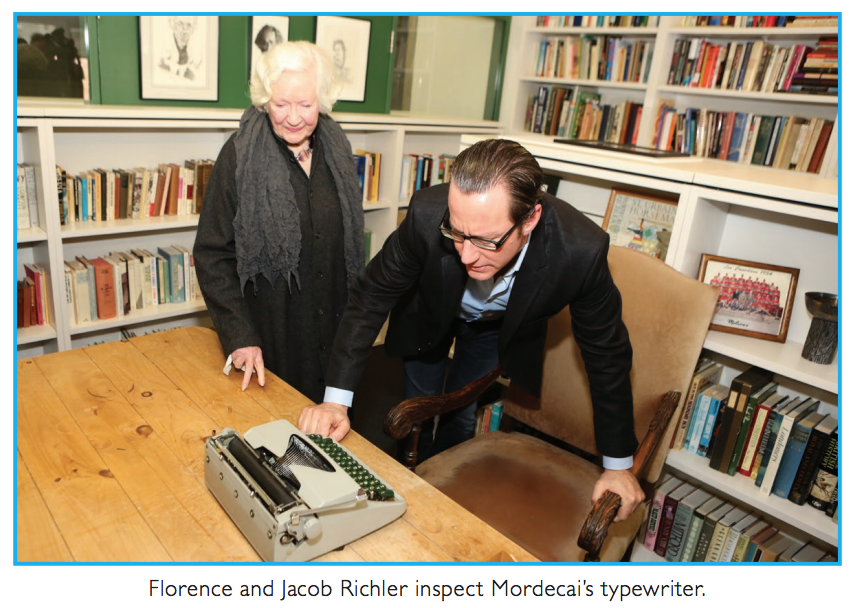“Our Writing Tools Are Also Working on Our Thoughts”: Kittler, Nietzsche, and Richler’s Facit TP1
Wanda Strauven, in “Media Archaeology: Where Film History, Media Art, and New Media (Can) Meet,” stresses media archaeology’s debt to Foucault’s own archaeological work: “One could say that media archaeology starts where Foucault’s analyses end” (68). However, immediately following this remark, she cites Kittler’s incisive critique of Foucauldian archaeological methodology, an insight that proves central to Kittler’s analysis in Discourse Networks: 1800/1900 and that he states directly in Gramophone, Film, Typewriter’s introduction before proceeding with his analysis of the titular technologies. Here are his comments on Foucault’s methodology, putting Strauven’s italicized excerpt in a bit more of its context:
And Foucault, the last historian or the first archaeologist, merely had to look things up. The suspicion that all power emanates from and returns to archives could be brilliantly confirmed … A tautology of history, or its calvary. For the libraries in which the archeologist found so much rich material collected and catalogued papers that had been extremely diverse in terms of addressee, distribution technique, degree of secrecy, and writing technique—Foucault’s archive as the entropy of a post office. Even writing itself, before it ends up in libraries, is a communication medium, the technology of which the archeologist simply forgot. It is for this reason that all his analyses end immediately before that point in time at which other media penetrated the library’s stacks. (5, emphasis added)
This characteristic phrase of “Kittlerese” – slightly maddening in its deliberately provocative understatement – ran through my head as I encountered Richler’s typewriters (and, crucially, their placement) in the Richler Room.
For Kittler, the typewriter – along with the gramophone and film – forms part of the Edisonian media world of his later Discourse Network 1900 where, as Winthrop-Young describes, “new analog recording and storage technologies … challenged the alpha status of scriptographic production and typographic reproduction techniques of the Gutenberg Galaxy” (58). Some of these technologies (like the gramophone) even allowed us to differentiate data streams and record physical effects of the Real (meant to be read here, for Kitter, in a Lacanian sense), and, therefore, we were able to bypass, in Kittler’s terms, the “bottleneck of the signifier” (4) that was indicative of the former “monopoly of writing” (4) as the sole technology for processing and storing these data streams.
In light of this new differentiation, clearly writing’s hegemony is subverted, but it is also more explicitly technologized through the invention of the typewriter in 1865 (in European accounts) or 1868 (in American accounts). In contrast to physical effects of the Real as registered by the gramophone, writing as explicitly technologized reveals itself to have always been Symbolic (again, very much in Lacanian terms). As Winthrop-Young and Wutz state, “[t]hought of around 1800 as a mysterious medium encoding prelinguistic truth, writing in the Age of Edison began to be understood as only one of several media possessed of an irreducible facticity” (xxv). They continue, “[i]n Mallarmé’s succinct phrase, ‘one does not make poetry with ideas, but with words,’ bare signifiers that inverted the logic of print as a vehicle of linguistic communication, and instead emphasized ‘textuality as such, turning words from means to ends-in-themselves’ (xxv-i). This recognition of writing as highly symbolic is prompted by it being further technologized, as the writer is also then confronted by the arbitrary materiality of signifiers: “Only the typewriter provides writing as a selection from the finite and arranged stock of its keyboard. It literally embodies what Lacan illustrated using the antiquated letter box. In contrast to the flow of handwriting, we now have discrete elements separated by spaces. Thus, the symbolic has the status of block letters” (Kittler 16).

Friedrich Nietzsche’s typewriter, a Malling-Hansen Writing ball, model 1878. Photo taken by Dieter Eberwein. Copyright: The Goethe and Schiller Archive, Weimar, Germany.
All of this frames the specific attention Kittler pays to Nietzsche in Gramophone, Film, Typewriter’s last section, specifically his analysis of the philosopher’s curious statement, in a letter from 1882, that “[o]ur writing tools are also working on our thoughts” (qtd in Kittler 200). For Kittler, extrapolating out from Nietzsche’s material, media-technological conditions writing on his Malling-Hansen Writing Ball, the philosopher’s metaphysical understanding of “inscription, which has degenerated into a poststructuralist catch-all metaphor, has validity only within the framework of the history of the typewriter. It designates the turning point at which communications technologies can no longer be related back to humans. Instead, the former have formed the latter” (211, emphasis added). Or, put slightly differently, “[w]riting in Nietzsche is no longer a natural extension of humans who bring forth their voice, soul, individuality through their handwriting. On the contrary: … humans change their position—they turn from the agency of writing to become an inscription surface” (210).
For me, there is a very productive dissonance that arises when I compare Kittler’s account of the typewriter – specifically, the (arguable?) technological determinism we find in his media-technological analysis of Nietzsche writing on his Malling-Hansen – with the way that the typewriter has come to signify in contemporary culture. Essentially, I would like to ask: what has happened to the profoundly agonistic account of typewriter writing that we find in Kittler?
Now elided as a site of contested human-technology interface, often instead it seems we choose to see the typewriter as an idealized site of writerly agency, even as a site of clarity, focus, or order, free from the invasive interruptions of our digital device interfaces. The typewriter’s aesthetic signifiers have become conflated with #typewriterpoetry and #typewriterpoems, hashtags that proliferate across social media, simultaneously disseminating the content of poetry – both newly written and quotes by others – but also material fetishism of a “supplanted” technology and for its posited authenticity.

Richler’s Facit TP1 typewriter with a file folder of his official letterhead.

Another of Richler’s typewriters in the room, an Underwood Standard No. 3, looming behind the writer’s desk atop a shelf.
I even experienced the seductive, orderly allure of the typewriter affectively as, under time constraints, I chose to “flee” the unknown, somewhat overwhelming world of consoles, their interfaces, and other components – to me, foreign objects and their myriad variants – at the Residual Media Depot, back to the cognitive order and intuitiveness of print culture at the Richler Room. As I entered the main room, I was calmed by the Author’s Desk and Typewriter, the site of agency and literary production. This was the room’s clearly signaled focus, but also, not insignificantly, the centre of the world that I was trained to recognize and think with and through.[1]

“The source of bestsellers,” as featured in Concordia University’s publication Mordecai Richler Reading Room: Concordia Honours a Literary Icon.
Concordia’s own branding/marketing for – and the resulting media coverage of – the Richler Room only further emphasize the Author’s Desk and Typewriter as its focus. The publication “Mordecai Richler Reading Room: Concordia Honours a Literary Icon,” dating from the room’s opening in November 2013, features Richler’s Facit TP1 (serial number: P233693) prominently in several photos, including a close-up of it on page 4 with the caption “The source of bestsellers” and two others (page 3 and page 9) of intimate family members and friends inspecting this “source” reverently. Pictures 3 and 12 in Christine Muschi’s photo essay for The Globe and Mail could, effectively, be #typewriter Instagram or Pinterest posts. Ann-Marie MacDonald’s “Dispatch 1: The Writer Settles In” begins with a still of typewriter keys and the sound of key clicks before it shows MacDonald examining Richler’s assorted possessions – including his chair, desk, and typewriter – stating, somewhat overwhelmed by this “legacy matrix” (1:32-3) of a room, “I don’t think I’m ready to sit there yet” (0:31-2).

“Florence and Jacob Richler inspect Mordecai’s typewriter,” as featured in Concordia University’s publication Mordecai Richler Reading Room: Concordia Honours a Literary Icon.
Kittler famously argues, in “There Is No Software,” “we do not write anymore” (147) on our computer word processing software. He continues, “after … lightning’s metamorphosis into electricity, manmade writing passes instead through microscopically written inscriptions, which, in contrast to all historical writing tools, are able to read and write by themselves” (147). Though Kittler’s take on user interfaces and the attendant obfuscation(s) of software is, admittedly, highly polemical, as Winthrop-Young identifies (75), could there be something in our current typewriter fetishism that has developed in response to our estrangement from being able to observe our “writing” – in this case, not just an estrangement from the longhand script technology of Kittler’s earlier Discourse Network 1800, but even from that of Discourse Network 1900’s typewriter? Now that, as Kittler says, “[w]e simply do not know what our writing does” (148, emphasis added), is this highly aestheticized typewriter fetishism our attempt to reclaim that verb through a (romanticized? sentimentalized?) focus on the visible material machinations and processes of “writing”?
Can a typewriter – and it “working on our thoughts” – simultaneously be, for Kittler writing on Nietzsche, illustrative of the start of “the transvaluation of all values” (200) in terms of humans’ relation to their technology, and, for us, somewhat like the aspirational Instagram writer’s equivalent of #liveauthentic (#writeauthentic?)? Do we have to choose?
[1] To the extent that literary criticism is ever explicit about its own methodology(/ies), as we have addressed already in class.
Works Cited
Concordia University. “Dispatch 1: The Writer Settles In.” YouTube, uploaded by Concordia University, 4 Nov. 2015, https://www.youtube.com/watch?v=qm9yWOHzjjs. Accessed 11 Oct. 2017.
Concordia University. Mordecai Richler Reading Room: Concordia Honours a Literary Icon. Concordia University, 2013, concordia.ca/content/dam/concordia/aar/docs/our-publications/commemorative-booklets/mordecai-richler-album.pdf. Accessed 11 Oct. 2017.
Kittler, Friedrich. Gramophone, Film, Typewriter. Trans. Geoffrey Winthrop-Young and Michael Wutz. Stanford: Stanford University Press, 1999.
Kittler, Friedrich. “There Is No Software.” Literature, Media, Information Systems. Ed. John Johnston. Amsterdam: Overseas Publishers Association, 1997. 147-55.
Muschi, Christine. “In pictures: Concordia University’s Mordecai Richler Reading Room.” The Globe and Mail, 27 Nov. 2013. https://beta.theglobeandmail.com/news/national/education/in-pictures-concordia-universitys-mordecai-richler-reading-room/article15645918/. Accessed 11 Oct. 2017
Strauven, Wanda. “Media Archaeology: Where Film History, Media Art, and New Media (Can) Meet.” Preserving and Exhibiting Media Art: Challenges and Perspectives. Eds. Julia Noordegraaf, et al. Amsterdam: Amsterdam University Press, 2013.
Winthrop-Young, Geoffrey. Kittler and the Media. Cambridge: Polity Press, 2011.
Winthrop-Young, Geoffrey and Michael Wutz. “Translators’ Introduction.” In Friedrich Kittler. Gramophone, Film, Typewriter. Stanford: Stanford University Press, 1999. xi-xxxviii.

